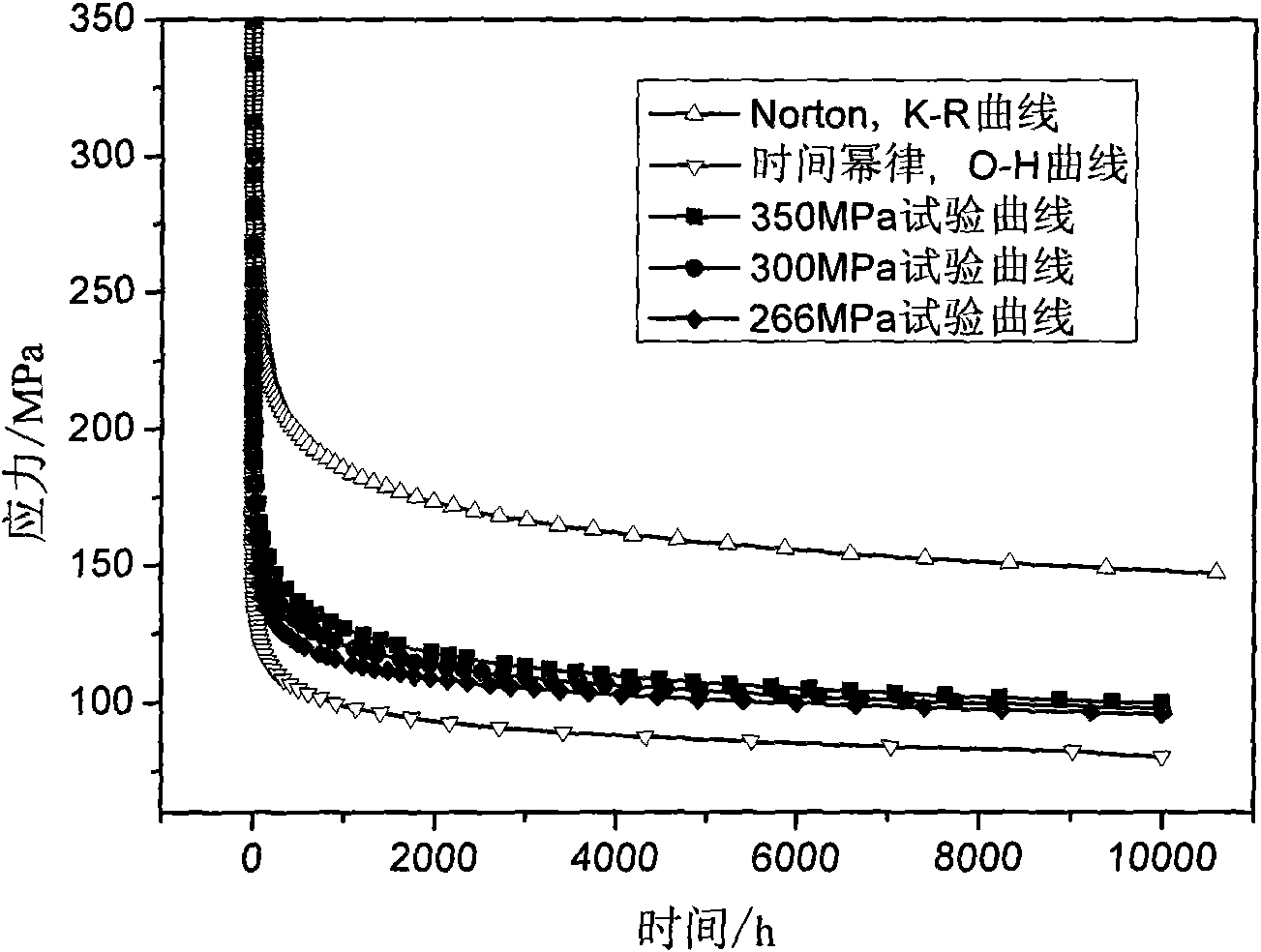Method for converting creep data into material high-temperature stress relaxation data
A technology of stress relaxation and material constants, which is applied in special data processing applications, analytical materials, electrical digital data processing, etc., can solve the problems of low accuracy of results, unsatisfactory data accuracy, restrictions on promotion and application, etc.
- Summary
- Abstract
- Description
- Claims
- Application Information
AI Technical Summary
Problems solved by technology
Method used
Image
Examples
Embodiment 1
[0056] Example 1 , conversion calculation
[0057] The domestic 1Cr10NiMoW2VNbN alloy is used for steam turbine rotors, blades and bolts below 600 °C. The following materials will be used as an example for further details. It should be understood that the following examples are for the purpose of illustration only, and are not intended to limit the scope of the present invention.
[0058] 1. Obtain creep data
[0059] see figure 1 As shown, the creep test is a unidirectional creep tensile test at 600°C, and the creep stresses are 360, 315, 300, 285, 270 MPa. The test data are taken from relevant literature (Yao H T, Shen S F, Xuan F Z, et al .Experimental Investigations on Mechanical Properties of a High Cr Ferritic Steel for USCSteam turbine Rotor[A],Challenges of Power Engineering and Environment[C].Proceedings of the international conference on power engineering 2007.October 23-27,2007,HangzhouChina,p 1066-1070).
[0060] 2. Parameter fitting
[0061] Using a combina...
Embodiment 2
[0084] Example 2 , experimental verification
[0085] In order to verify the conversion results, stress relaxation tests at three initial stress levels of 350MPa, 300MPa, and 266MPa at 600°C were carried out. The conversion results and experimental results based on the K-R equation conversion model are plotted in image 3 , the conversion results based on the O-H equation conversion model and the experimental results are plotted in Figure 4 middle. In order to compare the present invention with other methods, the above three initial stress conversion calculations have been carried out by other methods, and the conversion results and experimental results are drawn in figure 1 middle.
[0086] Depend on figure 1 , 3 , 4 result calculations can get, two kinds of average rate model conversion result error rates of the present invention are respectively 4.1% and 4.5%, all very low, far lower than 37% and 26% of K-R and O-H conversion model; From image 3 with Figure 4 It ...
PUM
 Login to View More
Login to View More Abstract
Description
Claims
Application Information
 Login to View More
Login to View More - R&D
- Intellectual Property
- Life Sciences
- Materials
- Tech Scout
- Unparalleled Data Quality
- Higher Quality Content
- 60% Fewer Hallucinations
Browse by: Latest US Patents, China's latest patents, Technical Efficacy Thesaurus, Application Domain, Technology Topic, Popular Technical Reports.
© 2025 PatSnap. All rights reserved.Legal|Privacy policy|Modern Slavery Act Transparency Statement|Sitemap|About US| Contact US: help@patsnap.com



